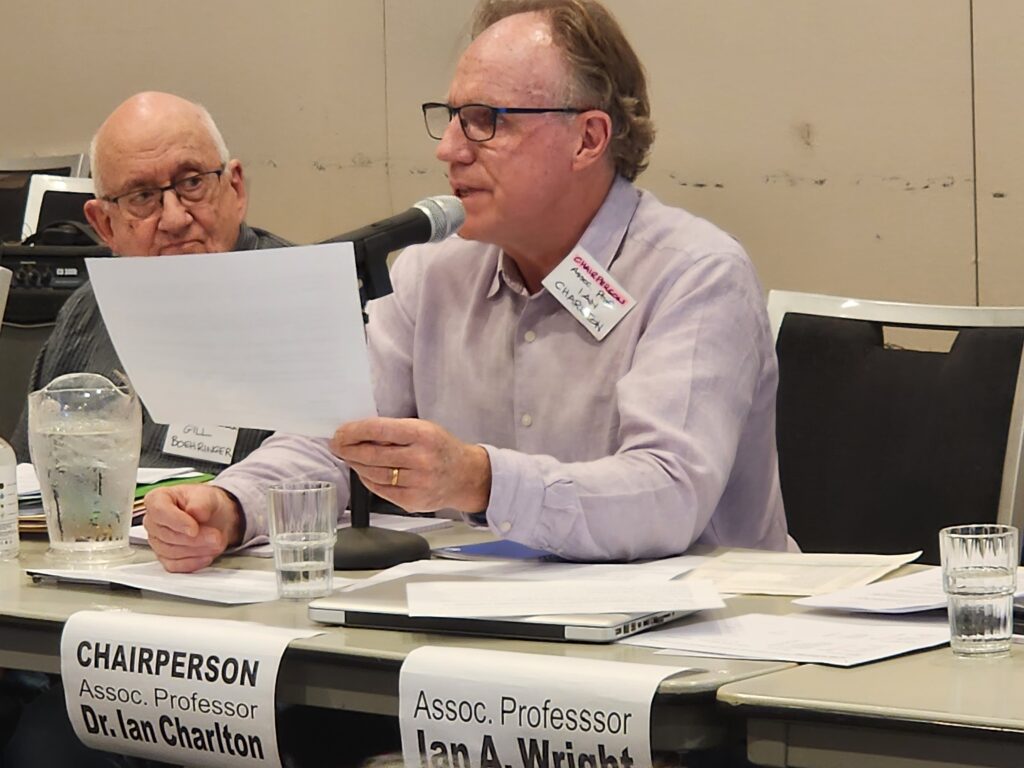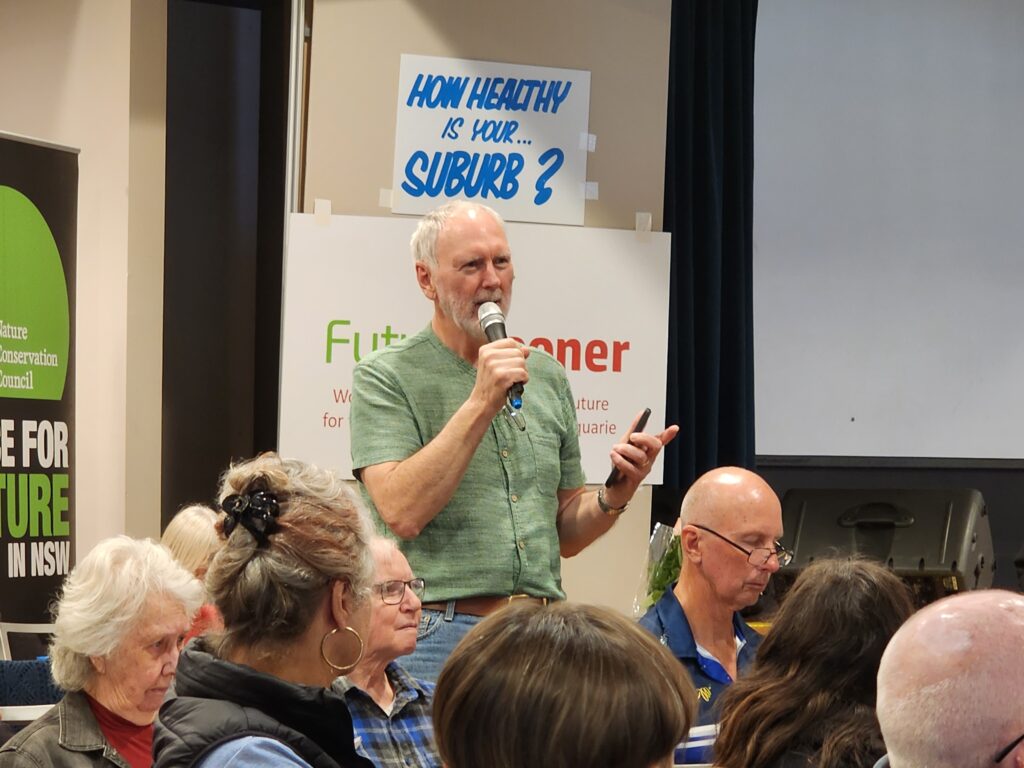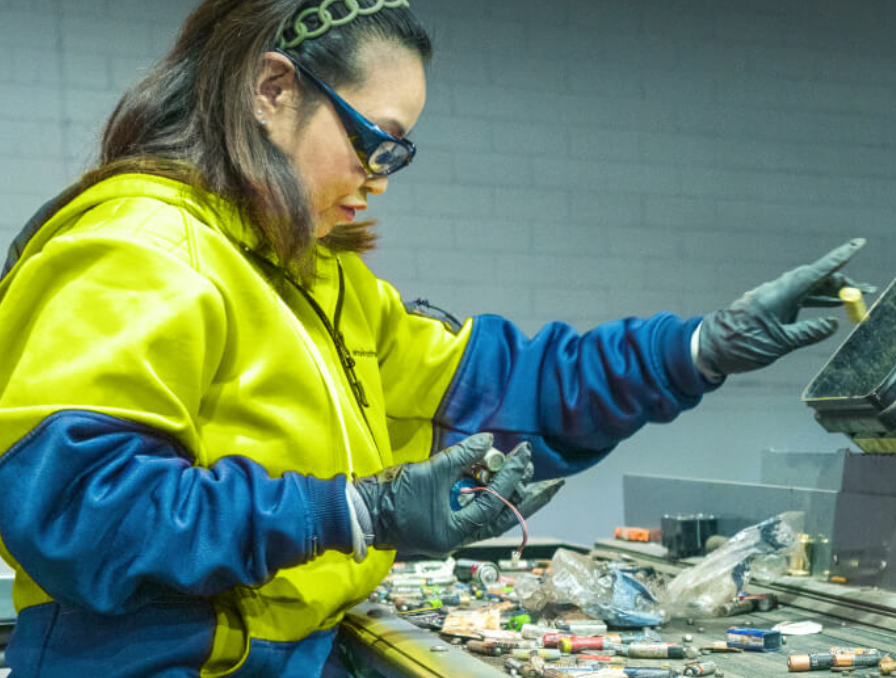The Interim Report from a recent Citizens’ Inquiry that examined the health impacts on communities located in the wind shadows of coal-fired power stations on the Central Coast and Lake Macquarie has labelled such places as dangerous for living, working or raising children.

Witnesses at the recent Future Sooner Citizens’ Inquiry held at Budgewoi shared compelling stories about suffering chronic health conditions including asthma, cardiovascular disease and cancers that they attributed to living close to polluting coal-fired power stations.
They said they were tired of their fears being ignored by politicians, regulators and operators.
“A panel of experts heard testimony to the Inquiry from more than a dozen local residents concerned by the high rates of asthma, cancers, chronic respiratory diseases and a range of other illnesses that were affecting them, family members, friends and even their pet dogs,” said Citizens Inquiry Chair, Dr Ian Charlton.
“The panel received 20 written submissions from individuals and organisations concerned about the toxic emissions that are polluting the air, soil and water, including underground water.
“The failure of governments to fulfil their duty to protect their citizens was a common theme of witness testimony and the submissions received.
Compelling personal stories
“The panel was told by residents that, ‘even our doctors have advised that what comes out of the coal-fired power stations is dangerous to people’s health’,” said Dr Charlton.
The community group that organised the Citizens’ Inquiry, Future Sooner, has emphasised that the event was not intended to be a scientific examination of the impacts of burning coal but an opportunity for ordinary residents to share their stories and concerns.

Residents’ testimonies about their chronic health problems were qualitative confirmation of the substantial empirical health evidence already in the public domain from credible scientific research and government data.
Residents told stories of how ash dust from coal ash dams swirled across the road, of wiping ash off surfaces and of watching planes dump a blue-green solution onto the Vales Point ash dam.
A member of the expert panel advised residents not to drink their tank water because of “fall out” from the coal-fired power station emissions and ash dams.
The Inquiry heard anecdotal evidence of the growing number of patients diagnosed with cancer at John Hunter Hospital and of patients being told that they would have to wait eight weeks to commence treatment.
“At Wyong hospital the Cancer Clinic is currently quadrupling in size,” the interim report said. “We can only assume this is to cater for an anticipated growth in the number of cancer patients it will need to accommodate in the future.
“The panel heard many stories of people suffering with cancers.
“One resident told how his grandmother moved to the Central Coast and was diagnosed with cancer. His father moved in to nurse her and he was then diagnosed with rare cancers. He then moved up to the Central Coast to nurse his dad and he was also diagnosed with rare cancers. Then his dogs died from cancer. The only consistency was the location – near a coal-fired power station.
“Another resident spoke of how her family moved to the Central Coast some years ago. They had a healthy diet, ran marathons, cycled, surfed, then her husband was diagnosed with brain tumours and she with a rare bladder cancer. Her husband died in April this year.
“And then there was the resident living in the shadow of the coal-fired power stations, who was a longtime surfer who never smoked or drank but who was diagnosed with three different cancers.”
Governments know the truth and don’t act
The Interim Report quoted a statement by NSW Health Minister, Ryan Park, who has acknowledged that “…air pollution, including from coal fired power stations, is associated with an increase in hospital admissions and death from cardiovascular and respiratory disease.”
It referred to earlier statements by the current NSW Treasurer, Daniel Mookhey, when he was chair of a parliamentary inquiry into coal ash dams:
“The committee agrees with the Inquiry participants that little research, if any, has been conducted on the impacts and long-term consequences in relation to the health of communities residing near coal ash dams. “We were disappointed with the response by the NSW EPA and NSW Health to community concern about the potential link between the circulation of additional metals in the air and waterways and impacts on health outcomes for the community. This response, in conjunction with the lack of research conducted to date on this matter, demonstrates a complete disregard by the government towards the health of its citizen.”
The Interim Report also concurred with a statement from the United Nations Special Rapporteur Dr. Marcus Orellana, who visited the region before reporting to the United Nations Human Rights Council on human rights and toxicity.
It said Dr Orellana’s statement “reinforced the evidence Future Sooner had compiled and the stories and presentations by residents and organisations at the recent Citizens Inquiry:
“There is a disconnect in narratives between authorities’ efforts and the lived experiences of local communities, indigenous people, and workers in relation to toxic issues,” Dr Orellama said.
“Government decisions regarding toxic pollution have profoundly affected the health of communities. This includes coal-fired power plants that have created intolerable levels of pollution, and discharged hundreds of tons of heavy metals into the environment, and whose carbon emissions have aggravated the global climate emergency. Australia has already warmed by 1.47C on average since 1910.”
And still they build
In spite of the universal acknowledgement that burning coal to make electricity is harmful to human health, the Interim Report highlights that a new residential subdivision has been approved to be located between two ash dams.
“Such disregard for the health of its citizens is further demonstrated by the planned siting of a suburb at Doyalson that will lie between two coal ash dams full of materials injurious to life and the environment,” the interim report said.
“This includes illegally dumped asbestos and other construction materials. Neither of these coal ash dams is lined to prevent leaching of health endangering contaminants into the ground water, surrounding soil and nearby lakes. Nor are they adequately covered to prevent air pollution associated with asthma and other illnesses.”
According to the Interim Report, the NSW Government is intentionally expanding the population in areas near the Vales Point and Eraring power stations and near existing ash dams. The government is aware that the PM2.5 and PM10 emission limits as set by the NSW Environment Protection Authority (EPA) do not meet the tougher emission limits of the European Union, United States or Japan.
Authorities also know that ash dams contain concentrated levels of poisonous heavy metals such as arsenic, mercury and cadmium that may be leaching into nearby lakes.
“In a two-year period over 1000 children living on the Central Coast and at Lake Macquarie presented to hospitals with acute asthma with more than 650 children having asthma directly attributed to coal-fired power stations,” the Interim Report said.
The latest threat being faced by the communities around the power stations is the presence of PFAS/PFOS at the site of the decommissioned Colongra/Munmorah power station.
“The panel was told how Delta Electricity (Vales Point power station and Delta Coal) has breached environmental protection license conditions 57 times since 2015 not just for its emissions but also for illegal asbestos dumping, ash dust pollution events and for exceeding water quality protection limits.
“Yet the EPA has consistently granted Delta Electricity, (Vales Point coal-fired power station), an exemption to pollute well above the NSW emission limits. Recently banks have refused Delta guarantees that it is required to have to operate.”
Seeking action
The Interim Report outlined how the panel found evidence of governmental disregard for the health of its citizens and a parallel disregard by the owners of the coal-fired power stations.
It found that their actions are making the Central Coast and Lake Macquarie a dangerous place to live, work and raise children.
In bearing witness to the stories from residents living in the wind shadows of coal-fired power stations and their ash dams, the Citizens Inquiry is seeking to find solutions and what the NSW government, MPs and the Environmental Protection Authority are prepared to undertake to protect citizen health.
A final report from the Citizens Inquiry, with recommendations, will be released in the first quarter of 2025.


